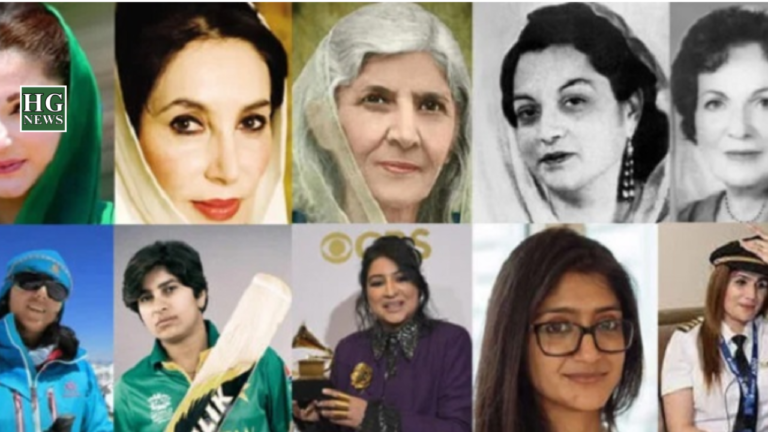First time, Pakistan uses artificial rain to fight pollution
The caretaker Punjab government took an innovative step in handling the major issues in Punjab and Lahore. Air pollution, or smog, was one of the main problems suffered by many cities and regions of Lahore and Punjab, in particular. To fight pollution, the Punjab government, with the collaboration of the UAE’s government, integrated cloud seeding, or, in other words, an artificial rain on Saturday, 16, 2023, in Lahore and its domains.
It may sound a bit crazy, but sometimes you have to think outside the box to tackle unpredictable Mother Nature’s. So hats off to those valiant scientists for coming up with such a novel approach. A group of brilliant minds proved that when it comes to solving problems, they yield a remarkable result. This discussion is made to overcome problems like water scarcity and air pollution; unconventional methods might just be the way to go!
In a few weeks, Lahore has become one of the most polluted cities in the world. It ranked first as a polluted city. This pollution is caused by high levels of particulate matter and pollutants, which cause smog. Smog is caused by high levels of particulate matter and pollutants in the air. It is a type of air pollution that results from the interaction of pollutants with sunlight. These pollutants basically come from vehicle emissions and industrial activities. It often occurs in areas with high population density and in areas where air pollution exists.
Air pollution has aggravated in Pakistan in the past few years. As a mixture of diesel fumes, coal being burned by thousands of brick kilns, seasonal crop burning causes smoke, and the low temperature in winter, these parameters together form inert clouds of smog.
Lahore suffers the most from the virulent smog that causes health issues. Exposure to a toxic environment for a prolonged period triggers strokes, heart disease, lung cancer, and respiratory diseases, according to the WHO.
To fight pollution, especially smog, the UAE (United Arab Emirates) government gifted artificial rain by sending their planes and team to Pakistan’s Lahore. This team has to wait for several days, approximately 10–12 days, for better conditions to do their assigned experiment, which is done mostly in Saudi Arabia and other deserted cities, to overcome the scarcity. The cloud seeding experiment was done for the first time in Pakistan to overcome the air quality index.
Artificial rain in Pakistan:
The technical team from the UAE used 48 flares to create rain. This information is given by Caretaker Punjab Chief Minister Mohsin Naqvi. These flares mostly contain potassium iodide, silver iodide, or common salt (sodium chloride) in the sky, also called the blue sky, which led to the precipitation of droplets found in clouds. This precipitation made the heavy water droplets or ice crystals in clouds that triggered rainfall in an area where it desperately needed to overcome the smog and clean the air.
Artificial rain, also known as cloud seeding, is a weather modification technique designed to induce precipitation. Its goal is to encourage rainfall or snowfall. The targeted sites of this artificial rainfall were in the area of Lahore, which is around 10 to 15 kilometers in diameter, including 10 specific regions, including the main targeted sites of Shahdara and Muridke.
Here’s a basic overview of how artificial rain or cloud seeding works:
Selection of Clouds:
To boost the process of precipitation, the selection of clouds for seeding is typically carried out on those clouds that have the potential for precipitation. Though they have potential, they need to initiate first.
Seeding Agents’ Dispersion:
Seeding agents, such as salts that aid in the formation of ice crystals in the form of particles or aerosols, are introduced into the clouds. This can be done using aircraft (as done in Lahore), ground-based generators, or other delivery methods to the clouds.
Nucleation and precipitation:
The seeding agents act as nuclei around which water droplets or ice crystals can form. This process encourages the formation of larger particles in the form of ice crystals. Crystals motivate condensation to form as rain.
Increased Precipitation:
As more droplets or ice crystals form and join together, they become heavy enough to fall from the cloud as rain or snow.
Is this proven to be harmful?
According to the latest updates, it does not have any harm to health. If there is any issue, then other countries like Dubai, Saudi Arabia, and America would definitely not take on such projects. After the success of this project in other countries, it was done in Pakistan on an experimental basis. This information was assessed to us by CM Mohsin Naqvi.
Conclusion:
Addressing air pollution, especially smog, the Punjab government took some steps that measure short-term relief, like simple water spray on roads and shutdowns of schools, factories at weekends, and markets at specific times. To overcome this issue, the Punjab government, with the collaboration of the UAE’s government, integrated cloud seeding or artificial rain on Saturday, 16, 2023, in Lahore. CM Mohsin Naqvi assessed this information via social media and also sent a heartfelt note to the UAE government for such a nice “gift,” as they sent there technical team and aircraft with all necessary things, excluding water, that were facilitated by the Punjab government. For a long-term strategy to create a smog-free environment, the government needs studies to formulate a specific plan.








Профессиональная мойка двигателя в Москве: лучшие цены, расскажем все преимущества.
Мойка двигателя авто https://moyka-motor.ru .